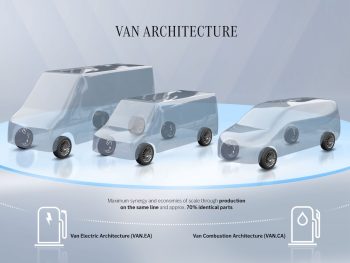Mercedes-Benz Vans has announced plans to offer “state-of-the-art” combustion engines alongside EVs as it abandons its former ‘electric-only’ ambitions.

The brand has already developed a new Van Electric Architecture (VAN.EA) that will underpin fully electric models from 2026.
Now, “to flexibly meet customer requirements”, Mercedes-Benz Vans has said a second variant of the platform, dubbed the Van Combustion Architecture (VAN.CA), will follow as the basis for ICE models.
The VAN.CA borrows heavily from VAN.EA; the two platforms share around 70% of common parts and will be produced on the same line.
The van brand said its “modular, flexible and scalable” architecture will enable maximum synergies and generates economies of scale.
It added that regardless of the drivetrain, the new vehicle architecture allows for a clear differentiation between privately positioned vans in the luxury segment and commercially positioned transporters in the premium segment.
It’s a turnaround form the previous ‘electric-only’ strategy, where Mercedes-Benz vans was targeting more than a 50% BEV share by 2030.
The announcement comes as Mercedes-Benz said it expects profits will be “significantly” lower this year and launched a fresh cost-cutting programme as it warned of potential tariff threats from Donald Trump.
Chief executive Ola Kallenius said: “In an increasingly uncertain world, we are taking steps to make the company leaner, faster and stronger.”

